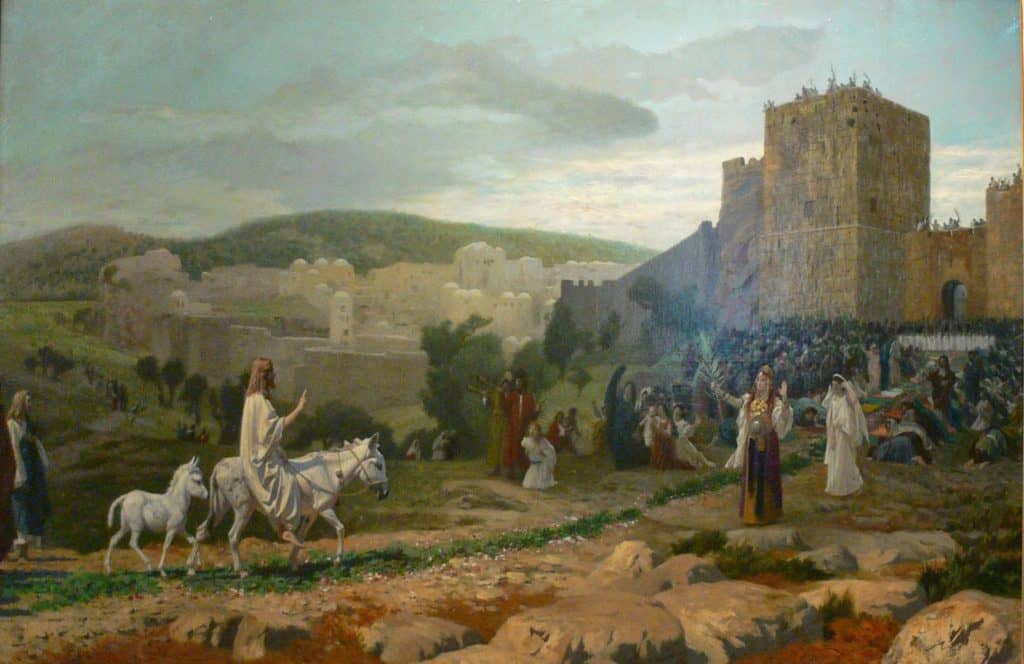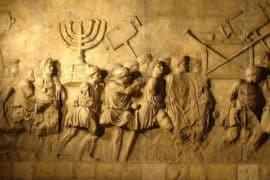If you missed the recent PBS two hour special “Last Days of Jesus” those of you in the United States can stream it free of charge on-line here.
I offer a few comments here, not by any means a full review, which would deserve several blog posts.
I thought the program on the whole was well worth watching and made a great contribution toward putting Jesus and his movement in a concrete political context–often neglected in accounts that seem to isolate him as an insignificant “spiritual” guru of sorts who could hardly be a “player” on the wider stage of Roman parties and politics.
I am pleased to see that the mysterious, shadowy figure of Lucius Aelius Sejanus (June 3, 20 BC – October 18, AD 31) is given a key role in the film, given his dominant influence in Rome during the years of Jesus’ preaching. I appreciated the emphasis on the political intrigue around the figures of Pontius Pilate and Herod Antipas–and their possible relationship to, and interest in, the revolutionary figures of John the Baptizer and Jesus, given their massive following (see Josephus’s comment on John and his revolutionary potential in his Jewish War here.). There also seems to be some evidence that Jesus at least had some significant connections with the household of Herod Antipas (Luke 8:1-3), but on the whole the Herodians appear to oppose Jesus and want him out of the way (Mark 3:6; 8:15; 12:13). Luke, in fact, has the Pharisees warn Jesus at one point that Herod Antipas wants to kill him–and Jesus refers to Herod as “that Fox”! (Luke 13:31). Most take that designation to be a reference to Herod’s craftiness, but it is not at all clear that was the implication in that time, see Randall Buth’s most helpful discussion here. It seems more likely Jesus is characterizing him as insignificant, worthless, and lacking in power.
Regarding Sejanus and his possible role in the death of Jesus I remain convinced that Jesus was crucified on a Thursday, April 4, in the year 30 CE (See my post “Jesus Died on a Thursday not a Friday“). This would make Sejanus’s death in October of 31 CE irrelevant to Jesus’ crucifixion in the ways presented in the film’s new theory. I realize there are many proposals for the year of the crucifixion of Jesus but in my judgment 30 CE has the best weight–and fits the gospel accounts with the 14th of Nisan falling on a Thursday–not a Friday as many have it. I refer readers to the complexities of the discussion with many references and notes found in Jack Finegan’s indispensable book, Handbook of Biblical Chronology.

I am also very skeptical regarding extending “Passion Week” to six months on the basis of the reference to “branches of palms” in John 12:13. The implication of Mark, which is our earliest text, is that this action was a spontaneous one, not something connected to the festival of Sukkoth in the Fall, involving “leafy branches” cut from the the fields (Mark 11:8). Matthew has “branches of cut from trees” (Matthew 21:8). Luke does not mention the foliage at all, but just the garments, that were laid out before him as a kind of welcoming “royal carpet” (Luke 19:36). The idea is not the traditional one of “waving” palm branches, associated now with Palm Sunday, but rather to make a path of cloth and foliage as a sign of a royal welcome. The final journey of Jesus to Jerusalem is consistently presented as just before Passover in all our sources. John even has Jesus in Jerusalem after Sukkoth, in December, at Hanukkah, which would also mitigate against a six-month stay in the city leading up to Jesus’ death (John 10:22-40). When Jesus left Jerusalem that winter he went “across the Jordan,” to a “safe zone” outside Herod’s territory, in the Decapolis. I have explored this area south of Pella, along the “brook Cherith” (Wadi el-Yabis today) associated with “the Elijah” Hideout in 1 Kings 17:1-7). See my post “A Jesus Hideout in Jordan.” Mark knows of this detour as well, though he does not elaborate (Mark 10:1). Both Mark and John make it clear that Jesus, only after this “sojourn,” on the other side of the Jordan, heads down to Jerusalem just before Passover.
That said, one nonetheless has to somehow account for the relative reticence of both Pontius Pilate and Herod Antipas to condemn Jesus to death by crucifixion as demanded by his priestly enemies who had had him arrested. According to Mark it is Pilate who had Jesus scourged, whereas in Luke’s account it is Herod Antipas, in Jerusalem for Passover (Mark 15:15-20; Luke 23:11-12). It may well be that both authors are trying to absolve the Romans and Herod of the guilt of having Jesus killed in order to blame it on the Jews. In that case these narrative are theological constructs and neither account would be historically reliable. I think that is the view of most scholars and historians. And it is only Luke who mentions Herod as part of the attempted condemnation of Jesus that night. Both rulers are noted for their cruelty and should have been more than willing to dispose of Jesus as a potential troublemaker and revolutionary–and Herod Antipas had already had John the Baptizer brutally executed without any legal charge against him. Nonetheless, to assume some kind of “deal” had been made–and was now broken–between Pilate and Herod with Jesus–giving him the rights to take over the Temple from the corrupt Sadducean priests, seems to me to be as speculative as it is unlikely and far-fetched.
Here are two posts on this blog where I narrative the events of the final days of Jesus’ life as I see things:
Last Days of Jesus: A Decisive Confrontation
Last Days of Jesus: A Final Messianic Meal









Comments are closed.